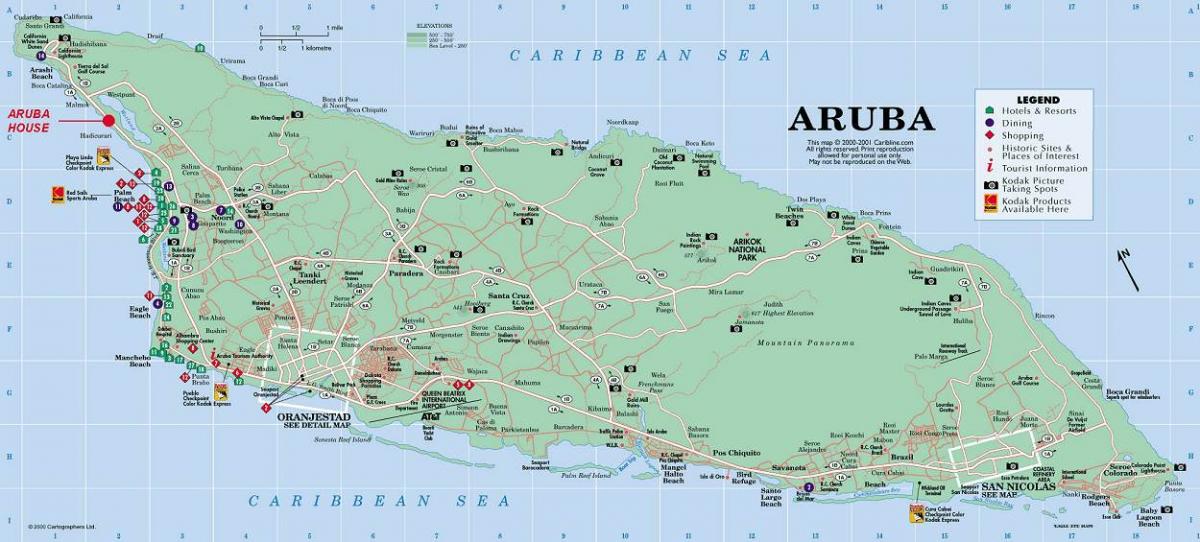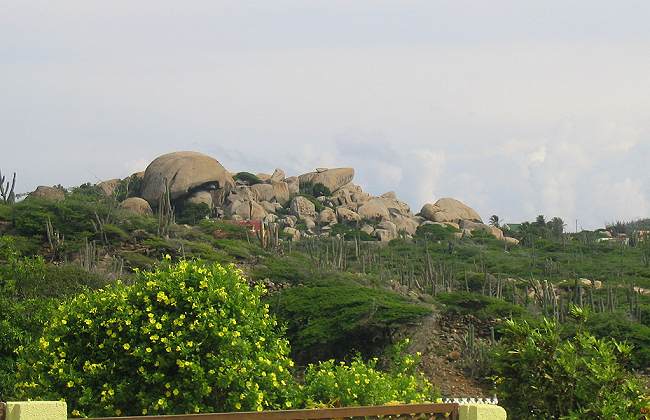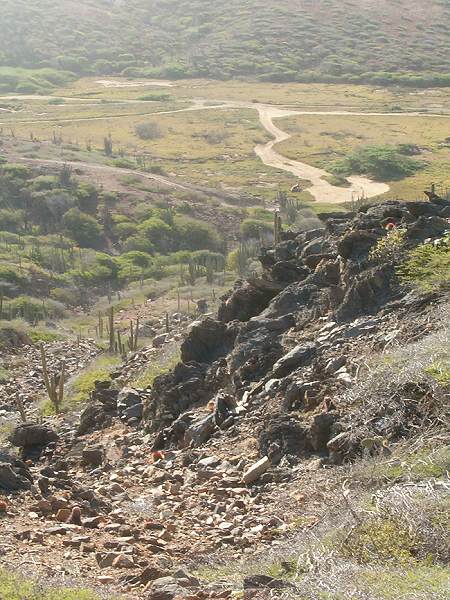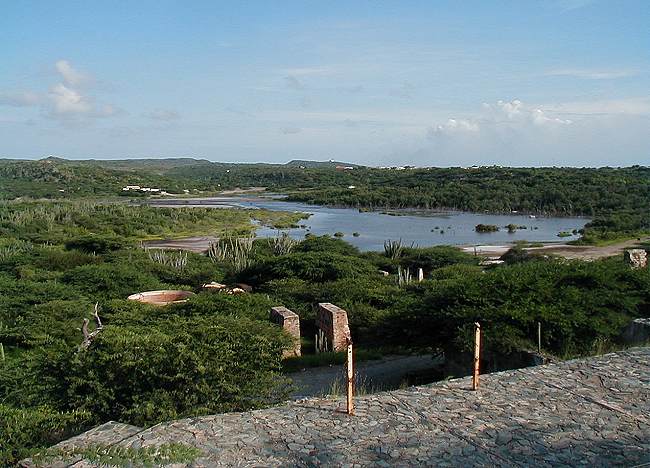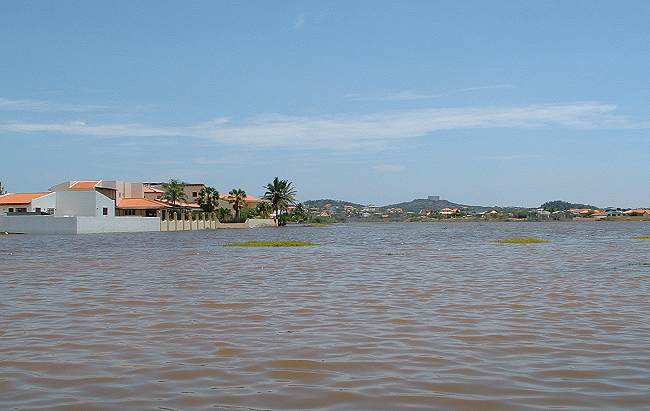Roel Uckerman and his wife Hesther are of Dutch descent. They are living on Aruba for 10
years now. Mr. Uckerman is working for the Arubian coast guard.
Aruba, Dutch West Indies is an island 20 kilometers off the coast of the peninsula Paraguana of Venezuela.
The size is approximately 190 square kilometers. The length is 31km and the most widen part has a width of 9km.
Aruba belongs to the Kingdom of the Netherlands since 1636. Together with its neighbouring Islands Curacao and Bonaire, which are respectively 60nm and 120nm to the east.
It is estimated that there are approximately 75.000 people living on Aruba, this is of course without illegal immigrants and tourists.
You may ask yourself now, why we publish a report about this island on our website.
The reason, that this is the first documented case that Boa constrictor has become an invasive species.
Invasive species (Neobiota) are animals who were brought to an ecosystem by humans where they have not existed before and where they are firmly established now.
Three criterions must be fulfilled by a species to be rated as neobiota:
- directly or indirectly introduced by humans
- introduction must have taken place after the year 1492 (beginning of the colonization and the related integration of the countries all over the world)
- self - reproducing population, who doesn't needs the help of humans to exist
The Boa constrictor is not a native snake on the island of Aruba. Nevertheless nearly every day specimens up to 2 meters long are captured. In March 2005 a 6 ft. (1,80 m) long boa even visited the garden of Mr. and Mrs. Uckerman.
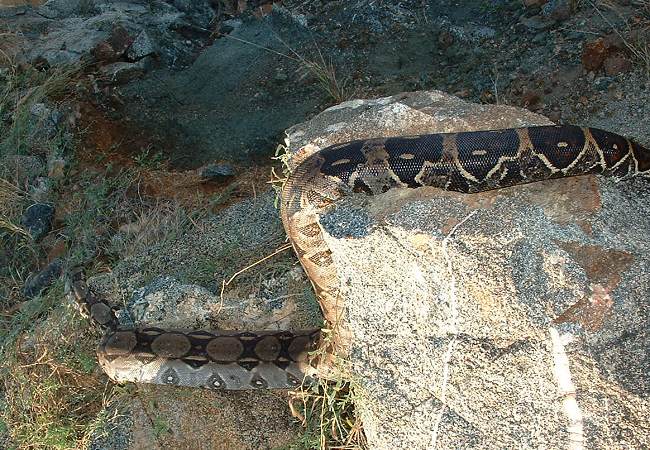 Boa constrictor on the Island of Aruba. The photo was made in the garden of the Uckerman family. Sadly, the neighbour killed the animal soon afterwards.
Boa constrictor on the Island of Aruba. The photo was made in the garden of the Uckerman family. Sadly, the neighbour killed the animal soon afterwards.
Most likely irresponsible owners of pet Boa constrictors released their animals in the wild. Since these boas are fast breeders and since they adapted well on the environment of Aruba they are showing up everywhere, even in the city. This is also due to the fact that they have no natural enemies there.
This newcomer in the snake world of Aruba is regarded as a plague by many of the natives.
Some boas are born in sewage wells and people on Aruba say that if you're bitten by such a snake you're infected with bacteria from the sewage. Up till now nothing serious has happened. But the common opinion of the people on Aruba is that this snake ruins the original wildlife.
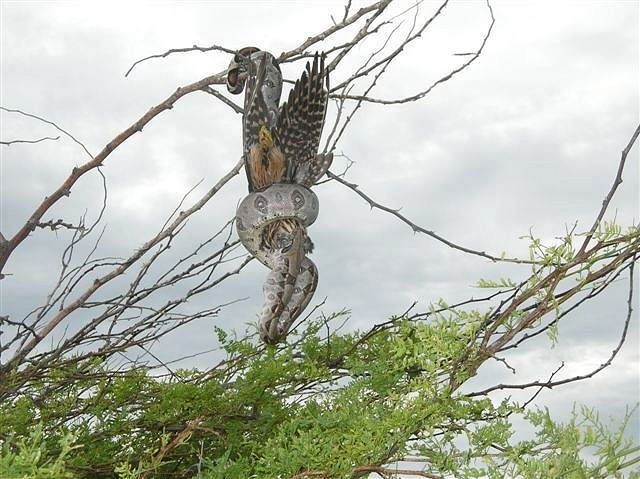 These photos of a Boa constrictor were taken by the dutch tourist J. Beijaard during a vacation on Aruba. He kindly put it to our disposal.
These photos of a Boa constrictor were taken by the dutch tourist J. Beijaard during a vacation on Aruba. He kindly put it to our disposal.
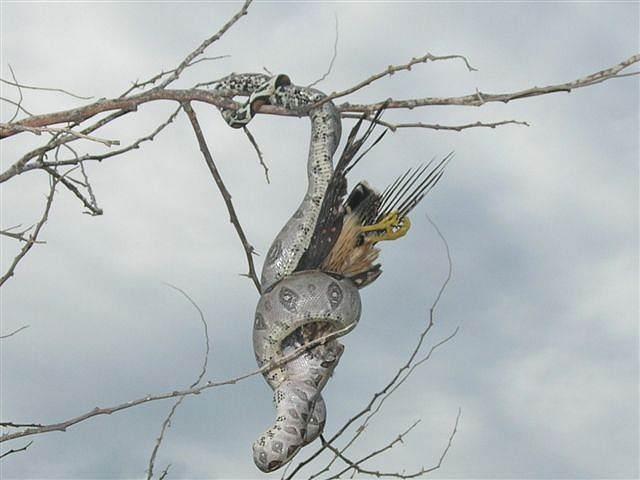 As one can see, the boa is just feeding on a large bird called warawara by the natives.
As one can see, the boa is just feeding on a large bird called warawara by the natives.
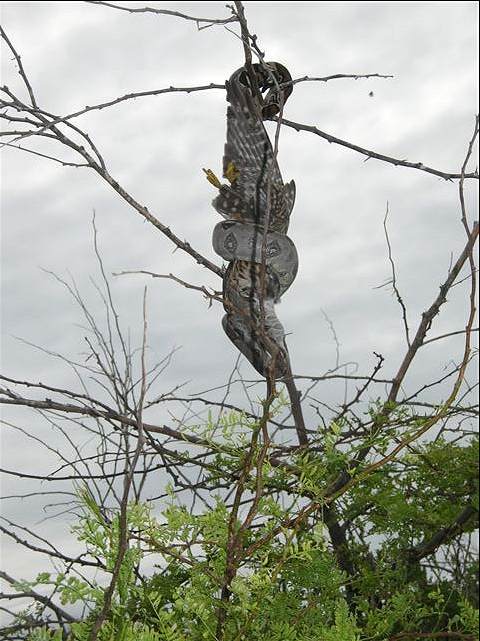 It is amazing that such a large boa still ventures in such a precarious height.
It is amazing that such a large boa still ventures in such a precarious height.
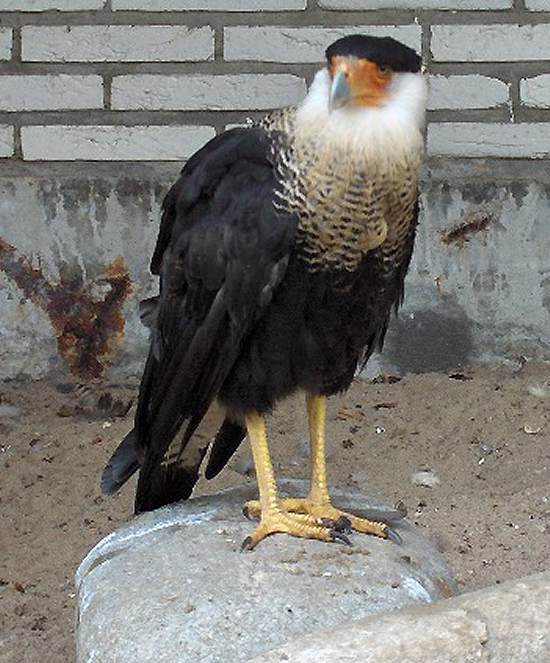 And this is the guy on the menu. The non-scientific name is Kuifcaracara, the latin name Polyborus plancus. This bird of prey is distributed in the U.S., South America and also on Aruba. It can grow to a length of 61 cm (2ft); the maximum wingspan is 130 cm (4,2 ft) and the maximum weight is 1500 g (3.3 pounds).
And this is the guy on the menu. The non-scientific name is Kuifcaracara, the latin name Polyborus plancus. This bird of prey is distributed in the U.S., South America and also on Aruba. It can grow to a length of 61 cm (2ft); the maximum wingspan is 130 cm (4,2 ft) and the maximum weight is 1500 g (3.3 pounds).
photo und information: Wikipedia
There are 2 native snakes on the island. The Santanero and the Cascabel. The Cascabel is a poisonous rattlesnake which only lives in the wild on Aruba. The maximum length of the rattle snake Cascabel is 65-100 cm and its colour varies between light-brown and grey-brown, the belly is broken white on its back it carries diamond shape figures. Its venom is not deadly.
(Note by H + E Stöckl: We was informed by a reader that the Cascabel is one of the most venemous rattlesnkes. An interntes research confirmed this. That means, Roel Uckerman is mistaken in this matter).
It seems the Cascabel is losening his territory to the Boa.
The maximum length of the Santanero is 50-70 cm and it only eats insects.
The final question is whether it is possible that the Arubian Boa constrictors are not released pets, but drawn from mainland Venezuela to Aruba by currents.
It is possible, but not likely. Between Aruba and the peninsula Paraguana (that consists mainly out of sand and is 5 times bigger than Aruba) is a strong, 2 to 4 knots, westerly current. A distance of 20 km with such a current is hardly to overcome even by Boas who are good swimmers.
However it is possible that they entered the waters from a more easterly place. Venezuela has many landslides due to heavy rainfall, maybe some of the Boas were drawn with it. This does not exclude setting free pet Boas.

